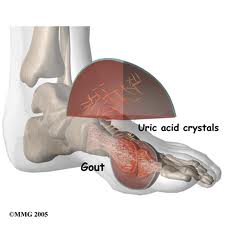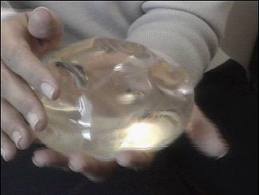 Women with peripheral artery disease (PAD) lose ability to walk short distances and climb stairs sooner than men.
Women with peripheral artery disease (PAD) lose ability to walk short distances and climb stairs sooner than men.
Peripheral arterial disease occurs when plaque builds up in the arteries that carry blood to your head, organs, and limbs. Plaque is made up of fat, cholesterol, calcium, fibrous tissue, and other substances in the blood.When plaque builds up in arteries, the condition is called atherosclerosis. Over time, plaque can harden and narrow the arteries. This limits the flow of oxygen-rich blood to your organs and other parts of your body. PAD usually affects the legs, but also can affect the arteries that carry blood from your heart to your head, arms, kidneys, and stomach. This article focuses on PAD that blocks arteries going to or in the legs.
Small calf muscles may be a feminine trait, but for women with PAD they’re a major disadvantage. Researchers at Northwestern Medicine point to the smaller calf muscles of women as a gender difference that may cause women with PAD to experience problems walking and climbing stairs sooner and faster than men with the disease. The study was published in the February 2011 issue of the Journal of the American College of Cardiology.
Peripheral artery disease affects eight million men and women in the United States. The disease causes blockages in leg arteries, and patients with PAD are at an increased risk of having a heart attack or stroke, said Mary McDermott, M.D., professor of medicine and of preventive medicine at Northwestern University Feinberg School of Medicine and physician at Northwestern Memorial Hospital.
McDermott and a team of researchers observed 380 men and women with PAD for four years, measuring their calf muscle characteristics and leg strength every year. Oxygen is needed to fuel calf muscles, and blockages in leg arteries prevent oxygen from reaching the calf muscles of people with PAD.
The researchers also tracked whether or not the patients could walk for six minutes without stopping and climb up and down a flight of stairs without assistance every year.
“After four years, women with PAD were more likely to become unable to walk for six minutes continuously and more likely to develop a mobility disability compared to men with the disease,” said McDermott, lead author of the study. “When we took into account that the women had less calf muscle than men at the beginning of the study, that seemed to explain at least some of the gender difference.”
Interestingly, men in this study experienced a greater loss of calf muscle annually than the women. But the men had more lower extremity muscle reserve than the women. That may have protected men against the more rapid functional decline women experienced. “We know that supervised treadmill exercise can prevent decline, so it’s especially important for women with PAD to get the diagnosis and engage in walking exercise to try and protect against decline,” McDermott said.

 In celebration of Women's Heart Month, the Institute for Women's Health Research featured heart disease in women in its February E-newsletter. To view this free newsletter, click
In celebration of Women's Heart Month, the Institute for Women's Health Research featured heart disease in women in its February E-newsletter. To view this free newsletter, click  Women taking a low dose of the antidepressant escitalopram had fewer and less severe hot flashes than those taking a placebo, a new clinical trial reports.
Women taking a low dose of the antidepressant escitalopram had fewer and less severe hot flashes than those taking a placebo, a new clinical trial reports. Due to the blizzard expected in Chicago today, Hot Flash Havoc ---a film of menopausal proportions, will be rescheduled at Northwestern University and be shown on Thursday night, February 3. The award winning film will be followed by a panel of experts from Northwestern who will be available to answer all your questions about menopause. To register for the event, click
Due to the blizzard expected in Chicago today, Hot Flash Havoc ---a film of menopausal proportions, will be rescheduled at Northwestern University and be shown on Thursday night, February 3. The award winning film will be followed by a panel of experts from Northwestern who will be available to answer all your questions about menopause. To register for the event, click The safety and comfort level of a popular unstructured boot has recently been in the news. These slipper-like boots, originally from Australia but copied by many manufacturers, have become the darling of celebrities and the fashion "must have" for women and girls all over the globe. Podiatrists (foot doctors) have been issuing warnings about these furry boots, especially if worn for extended periods of time. One of the most common orthopedic complaints is plantar fasciitis. Plantar fasciitis is the most common cause of heel pain. This condition occurs when the long fibrous plantar fascia ligament along the bottom of the foot develops tears in the tissue resulting in pain and inflammation. Its symptoms include burning, stabbing, or aching pain in the heel of the foot. Most sufferers will be able to feel it in the morning because the fascia ligament tightens up during the night while we sleep, causing pain to diminish. However, when we climb out of bed and place pressure on the ligament, it becomes taut and pain is particularly acute. The pain may decrease when the tissue warms up but it can return with increased activity during the day.
The safety and comfort level of a popular unstructured boot has recently been in the news. These slipper-like boots, originally from Australia but copied by many manufacturers, have become the darling of celebrities and the fashion "must have" for women and girls all over the globe. Podiatrists (foot doctors) have been issuing warnings about these furry boots, especially if worn for extended periods of time. One of the most common orthopedic complaints is plantar fasciitis. Plantar fasciitis is the most common cause of heel pain. This condition occurs when the long fibrous plantar fascia ligament along the bottom of the foot develops tears in the tissue resulting in pain and inflammation. Its symptoms include burning, stabbing, or aching pain in the heel of the foot. Most sufferers will be able to feel it in the morning because the fascia ligament tightens up during the night while we sleep, causing pain to diminish. However, when we climb out of bed and place pressure on the ligament, it becomes taut and pain is particularly acute. The pain may decrease when the tissue warms up but it can return with increased activity during the day. Though the risk of gout is low in women, a new study reported in
Though the risk of gout is low in women, a new study reported in  After an intensive review of known cases of a rare form of cancer in breast implant recipients, the Food and Drug Administration says women with implants may have a very small, but increased risk of developing anaplastic large cell lymphoma, or ALCL.
After an intensive review of known cases of a rare form of cancer in breast implant recipients, the Food and Drug Administration says women with implants may have a very small, but increased risk of developing anaplastic large cell lymphoma, or ALCL. A new drug delivery technique may hold promise for more efficient cancer therapies. The technique involves storing a cancer drug inside tiny objects called nanoparticles which can carry drug molecules and target them to specific cells. Using this method, researchers were able to shrink tumors in mice while using smaller doses of the drug to reduce harmful side effects. For example, the chemotherapy drug cisplatin is an effective cell killer. It's used against half of all human cancers. However, cisplatin carries serious side effects, like kidney and nerve damage. These side effects limit the dose that can be used, which is a problem because the drug only lasts in the bloodstream for a short time.
A new drug delivery technique may hold promise for more efficient cancer therapies. The technique involves storing a cancer drug inside tiny objects called nanoparticles which can carry drug molecules and target them to specific cells. Using this method, researchers were able to shrink tumors in mice while using smaller doses of the drug to reduce harmful side effects. For example, the chemotherapy drug cisplatin is an effective cell killer. It's used against half of all human cancers. However, cisplatin carries serious side effects, like kidney and nerve damage. These side effects limit the dose that can be used, which is a problem because the drug only lasts in the bloodstream for a short time. The January 2011 issue of Chicago Magazine features 250 MDs in 15 specialties in women's health. Click
The January 2011 issue of Chicago Magazine features 250 MDs in 15 specialties in women's health. Click